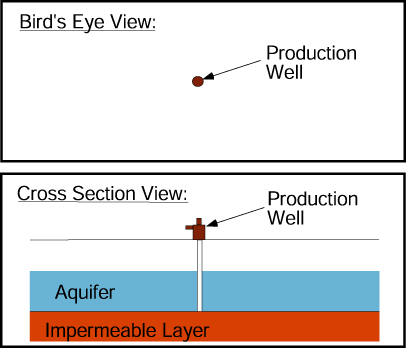When an extraction (or production) well is turned on and begins to yield water, the water table near the well is lowered and a cone of depression forms and gradually expands in size around the well. This happens because water is being withdrawn from the aquifer at a rate that is greater than it is being replenished by the aquifer. This lowering of the water table is called drawdown.
If there is no hydraulic gradient the cone of depression will look like an inverted cone in three dimensions because the replenishment of the aquifer near the production well is coming equally from all directions around the well. In map view the cone of depression is circular with the greatest drawdown at the well.
